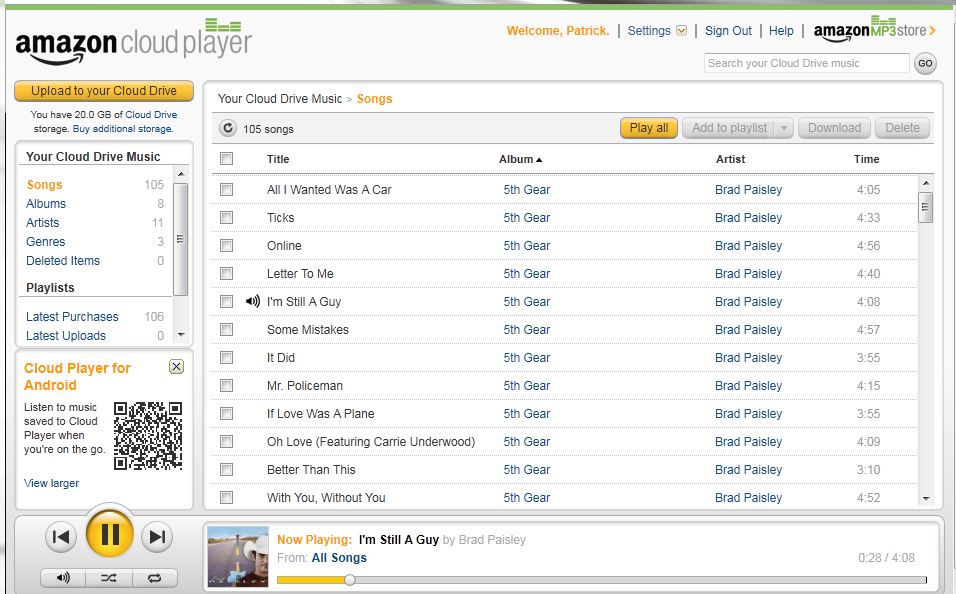One question I have been getting a lot lately has been whether or not I think Apple’s iCloud is going to be the end to the SMB/ Home storage server market. After all, many users do store their music, pictures, contacts and documents and etc. are often stored on network attached storage (NAS) devices. One thing users are constantly forgetting is that in the US, the majority of broadband connections are still unmetered, meaning incremental traffic does not incur an incremental fee. In other countries, this is not necessarily the case and data usage fees are going to fundamentally shape the way people view cloud services.
As a bit of forewarning I am an avid Apple product user with an iPad, iPod touch (late 2010 version), 11″ MacBook Air (late 2010 version) as well as a few iPod Nanos I keep in the car and for the gym. Somewhat oddly, I am also an Android phone user (Motorola Atrix 4G at the moment) so I do get to see things regularly on both platforms. One thing that I have noticed recently is that my 4GB AT&T cap on monthly data transfer is not enough for my usage unless I actively throttle my usage. Receiving over 100MB/ day of e-mail is a primary culprit, but other things take their toll too including Pandora, YouTube, and photo sharing. iCloud pushing a photo stream photo from one device to another (e.g. an iPone to iPad 2) over a wireless network may not count against a user’s iCloud quota, but will incur a few MB of data transfer for both devices.

One application that I have been using a lot of lately has been Amazon.com’s Cloud Player whereby purchased music is made available both to download, but also to listen to either from a PC’s web browser or through an Android mobile application. At first I thought the service was great with little or no downside. After a week or so I noticed that my data usage was spiking over 150MB/ day listening to twenty or so tracks a day which was simply too much. My answer was to download the tracks that I wanted to listen to either on a home network or once through the “3G+/4G” network. This simple change saved me well over 100MB/ day in data usage.
This lesson cannot be understated in importance to the home and SMB storage server segment. Virtually every cable/ DSL provider in the US is piloting data plans where users pay based on usage instead of a flat fee. First with YouTube and now with NetFlix consuming a huge amount of overall Internet bandwidth, service providers need to figure out how to cope with ever increasing data consumption by consumers and charge for usage. My Amazon.com Cloud Player example is a good one where cloud media storage can easily introduce incremental cost to an organization or individual. As the number of connected devices per person increases, so does the number of potential devices a user may access information from. Storage architectures do naturally fluctuate storage bias between central and client storage over time but the answer rarely involves all central (cloud) or client storage and usually some mix in between. Undoubtedly the iCloud service will have the effect of increasing the popularity of cloud storage for the masses so it will not be long until we start seeing articles on how an average user managed to have an iCloud driven high data usage bill. It already has happened with rogue applications.
A second major point is that users are going to become increasingly wary about massive security breeches such as the recent one at Sony that put millions of users at risk. Controlling a local storage solution allows one to both setup appropriate encryption and also make the potential target much smaller. For a sophisticated organization, compromising a high-value target such as Sony or Lockheed is a lot more attractive than “Patrick’s Tire Shop” both from a volume of information perspective as well as from an attention perspective. Organizations large and small are still coping with the balance between in-house storage and cloud storage especially for sensitive information. Until a better scheme of online protection is established, there will likely be data people do not want Apple, Google, or other organizations to have and potentially have misappropriated.
Conclusion
Overall, the fact that home users and organizations both generate more information requests and creations than data transfer caps will allow to be transferred cost effectively over the WAN and users have information that should not be stored on third party systems, there will still be a place for local servers. For me, being able to sync media prior to flights is a major bonus and greatly decreases my bandwidth needs. As someone with experience using Amazon’s Cloud Player alongside various types of enterprise, cloud, and local storage it is fairly easy to see the bonus of the different models. One thing to remember is that Apple is a very well run corporation that makes a lot of money charging users $100 to move from 32GB to 64GB of flash memory (that costs under $20) on products such as iPods and iPads. There is no way Apple would release the iCloud that de-emphasizes the need for these extraordinarily high margin upgrades unless it can make up and expand the revenue and margin contribution from iCloud. In the process, consumers and businesses will also need to cope with demands placed on networks from multiple end-user devices constantly synchronizing with the iCloud. Understanding the cost-effective use cases for cloud storage is something that enterprises have been looking at for a long time and the iCloud is an example of a technology that will emphasize storage tiering through local area networks and the Internet.



